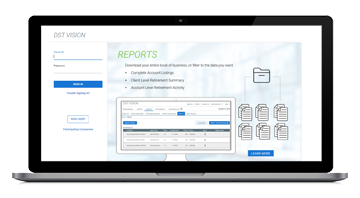Focusing on income: navigating market cycles with multi-asset credit strategies
In today’s uncertain market environment, we believe a MAC strategy has the potential to provide investors with a dynamic option for their core income needs.

Key takeaways
- A MAC strategy can invest flexibly across multiple credit sectors and instruments.
- This allows MAC portfolio managers to potentially capture strong risk-adjusted returns through market cycles by capitalizing on relative value changes and market dislocations.
- We believe MAC strategies can provide investors with a dynamic, income-driven investment strategy alongside prudent risk management.
What is MAC?
Multi-asset credit (MAC) is an established, credit-based strategy that seeks to enable investors to navigate uncertain market environments and capture income-driven investment opportunities regardless of the macroeconomic backdrop. With the flexibility to invest across both traditional and alternative credit markets, we believe that MAC strategies can be a core allocation in any investment portfolio, which offers the potential to provide strong risk-adjusted total returns versus strategies that only invest in single asset classes or geographies.
The ABC of MAC investing
Investing in MAC isn’t about market timing; rather, MAC strategies should be seen as a strategic, long-term strategy that seeks to balance risk-adjusted returns and liquidity primarily through securities that provide high levels of income. We believe a MAC portfolio manager should demonstrate an investment process discipline through fundamental, bottom-up security selection and complement this with thoughtful asset allocation.
It may be useful to think about MAC in terms of ABC:
- Accessing income
- Best geography, asset class, and sector
- Capital preservation potential
Accessing income
In a world in which we’re often bombarded by conflicting economic data and geopolitical issues, it’s important not to lose sight of the primary responsibility of a MAC manager: seeking to generate consistent, repeatable income for investors. Having a broad investment universe enables MAC managers to identify high-quality, risk-adjusted investments, rather than being limited to a single asset class within credit markets.
Understandably, the goal of MAC managers is to seek higher yields from alternative credit markets as long as the risk/reward dynamic is appropriate. Due to higher interest rates in both North America and Europe, investors may reasonably expect more income from their MAC investments compared with most of the past decade. What’s more, many securities in the MAC universe pay floating-rate income, which means investors may receive higher coupons should interest rates rise (and vice versa). This can potentially buffer investment portfolios in inflationary environments.
Yields to expected maturity in traditional and alternative credit markets
The sheer size of the combined MAC universe—which reaches into trillions of dollars—allows a portfolio manager to be fundamentally selective when seeking potential income opportunities while maintaining the integrity of a diverse portfolio.
A typical MAC universe
Asset type |
Description |
Investment-grade bonds |
Bonds issued by corporations with credit ratings equivalent to AAA to BBB–, indicating relatively low default risks |
High-yield bonds |
Bonds issued by corporations with credit ratings equivalent to BB+ or lower, indicating relatively higher default risks |
Asset-backed securities (ABS) |
Debt instruments secured against a large pool of assets, such as a pool of loans |
Collateralized loan obligations |
A subset of ABS comprising loans made to corporations |
Convertible bonds
|
Bonds that give investors the option to convert their debt into equity in certain situations |
Financials |
Bonds issued by banks to help them meet regulatory capital requirements |
Loans |
Lending provided by financial institutions to individual corporations |
For illustrative purposes only. Not a recommendation.
Best geography, asset class, and sector
MAC strategies are typically benchmark agnostic and, as such, enjoy the flexibility to rotate between what the manager considers to be the best geography, asset class, and sector. In pursuit of the best risk-adjusted returns for investors, MAC managers can often select higher-income asset classes with equivalent or lower credit risk profiles. When seeking optimum risk-adjusted returns, historical data shows that:
- Investors in MAC strategies achieved higher returns by allocating to alternative credit, as they were paid income exceeding the relative fundamental risks. As an example, European loans have outperformed European high-yield bonds by around 0.7% per year and 11.7% cumulatively over the past decade.¹
- Investors in MAC strategies achieved higher returns by allocating to European credit markets as they received an income premium over U.S. assets. This was consistent across a variety of credit asset classes, including investment-grade bonds, high-yield bonds, and—notably—loans, where European assets have outperformed their U.S. equivalents by 1.2% per year and 19.5% cumulatively over the past 10 years.¹
Annualized returns of typical MAC universe indexes over 10 years
Best geography
Geographic relative value can shift: Economic cycles, political changes, market sentiment, and global events can all affect regional credit markets differently. As such, flexibility and responsiveness are essential for optimizing risk-adjusted returns. Crucially, a MAC strategy must have the conviction—based on the manager’s resources and skill set—to pivot when needed.
One such example is the shift in relative value between European and U.S. secured loans. European loans offered higher income for most of the last decade; however, between late 2015 and mid-2017, U.S. secured loans offered a better return profile until European loans began outperforming again in 2018. In this instance, a well-resourced and skilled MAC manager should have the flexibility to rotate between geographies and sectors to seek the best returns regardless of market conditions.
Geographic relative value has shifted over time
A flexible approach to geographic allocation has benefited long-term returns (%)
Best asset class
Credit assets are far from homogeneous. They each respond differently to technical factors, sentiment, and market fundamentals, which is why their income profiles are different. MAC portfolio managers therefore have the potential to exploit higher income opportunities through asset allocation without necessarily increasing credit risk.
A good example is in the collateralized loan obligations (CLOs) space. Market data has shown that CLOs with a high-yield credit rating of BB have consistently paid a higher income than global high-yield bonds, which carry the same level of credit risk, for more than a decade. Sometimes even investment-grade CLOs (with a credit rating of BBB) pay more income than riskier global high-yield bonds.
This market phenomenon has created the opportunity for MAC strategies investing in the CLO space to achieve higher income for investors while enabling MAC managers to take on equivalent or lower levels of fundamental loss risk.
European CLO income premium (spreads) vs. global high-yield bonds
Best sector
It isn’t unusual for an individual sector within credit markets to experience a macro-led dislocation, creating an opportunity for a MAC manager to reallocate capital within a portfolio. A good example is what happened in the European financials sector during COVID-19 and subsequent banking sector turmoil in 2023. In both circumstances, herd investment mentality resulted in significant—but temporary—underperformance. MAC strategies with a long-term fundamental outlook could invest more in European financials following these dislocations, leading to higher returns for those investors.
Asset class relative value: EU financials
Capital preservation potential
A core component of any MAC strategy is its approach to help preserve investor capital. A MAC manager will attempt to mitigate the downside risk of credit investing with a view to ensuring that higher levels of income available from sub-investment-grade assets aren’t eroded by the impact of credit defaults. This is only consistently possible through extensive, bottom-up, fundamental credit research. A MAC portfolio manager will seek to avoid credit instruments that pose excessive risks and, as such, achieve lower default rates than high-yield credit indexes. Combined with high-yield levels of income, this has the potential to generate attractive risk-adjusted returns.
What are the potential risks associated with MAC?
Potential risk |
Why is this a risk? |
How can MAC help? |
Credit default risk |
MAC strategies can invest in sub-investment-grade (high-yield) credit instruments. |
Credit selection, driven by fundamental, bottom-up research, can help to achieve MAC portfolio default rates that are meaningfully lower than those seen in high-yield credit market indexes. |
Interest rate risk |
Traditional government and corporate bonds typically fall in value when central bank interest rates rise (and vice versa). |
Many instruments in the MAC universe pay floating-rate (variable) interest, which effectively removes interest rate risk at an individual security level and reduces the overall portfolio’s price sensitivity to interest rate movements. |
Liquidity risk |
The MAC universe primarily consists of instruments that can be bought and sold easily; however, some instruments may be more difficult to liquidate than others, particularly during market stress. |
The portfolio manager will construct the portfolio with an appropriate level of liquidity. A MAC strategy designed for daily trading will have minimal exposure to less liquid instruments. |
Prepayment risk |
Some instruments allow borrowers to repay debts early. Creditors (investors) no longer receive the regular income payments and may not be able to reinvest in similarly attractive opportunities. |
Ongoing, fundamental research and informed, top-down perspectives enable a MAC portfolio manager to evaluate and reduce a portfolio’s exposure to potential future prepayment risks. |
Volatility (mark to market) |
The market price of individual credit instruments held in a MAC portfolio can fluctuate, particularly during market stress. |
MAC strategies can seek to limit overall portfolio volatility, for example, to a single-digit percentage. This reduces the amount by which the value of the end client’s investment fluctuates, thereby improving its risk-adjusted return and helping to preserve investor capital. |
A dynamic income strategy for investors
We believe investors seeking a consistent, attractive, risk-adjusted return profile driven by high income should consider a long-term strategic MAC allocation. A MAC strategy—which allows managers to exploit potential opportunities across a variety of asset classes, geographies, and sectors alongside disciplined fundamental credit analysis—may result in better risk-adjusted returns compared with passive index-tracking strategies (e.g., index funds), traditional investment-grade corporate bonds, and government bonds. As such, we believe that MAC strategies should be seen as a dynamic potential opportunity for an investor’s income and growth requirements.
1 Structured Credit Investor (SCI), Bloomberg, as of 3/31/25.
Important disclosures
Important disclosures
The Intercontinental Exchange Bank of America (ICE BofA) U.S. Corporate Index tracks the performance of U.S. dollar-denominated investment-grade corporate debt in the U.S. domestic market.
The ICE BofA Euro Corporate Index tracks the performance of euro-denominated investment-grade corporate debt publicly issued in the eurobond or euro member domestic markets.
The ICE BofA European Currency High Yield Index tracks the performance of euro- and sterling-denominated below investment-grade corporate debt publicly issued in the eurobond, sterling domestic, or euro domestic markets, capping issuer exposure at 3%.
The Morningstar LSTA US Leveraged Loan Index tracks the performance of the market-weighted performance of U.S. dollar-denominated institutional leveraged loan portfolios.
The ICE BofA Contingent Capital Index tracks the performance of investment-grade and below investment-grade contingent capital debt publicly issued in the major domestic and eurobond markets.
The J.P. Morgan CLO BBB Index tracks the performance of CLO securities with an investment grade credit rating of BBB.
The J.P. Morgan CLO BB Index tracks the performance of CLO securities with a sub-investment grade credit rating of BB. Investment grade securities are considered lower risk than their sub-investment grade equivalents.
The J.P. Morgan European Collateralized Loan Obligation BBB only Index aims to track the performance of broadly syndicated, arbitrage Euro-denominated, BBB-rated CLO debt from the flagship J.P. Morgan European CLOIE Index.
The J.P. Morgan European Collateralized Loan Obligation BB only Index aims to track the performance of broadly syndicated, arbitrage Euro-denominated, BB-rated CLO debt from the flagship J.P. Morgan European CLOIE Index.
The ICE BofA Developed Markets High Yield Index is a subset of ICE BofA Global High Yield Index. It tracks the performance of U.S. dollar-denominated, non-investment grade corporate debt publicly issued in developed markets.
The views presented are those of the authors(s) and are subject to. No forecasts are guaranteed. This commentary is provided for informational purposes only and is not an endorsement of any security, mutual fund, sector, or index. Past performance does not guarantee future results. Diversification does not guarantee a profit or eliminate the risk of a loss.
This material is for informational purposes only and is not intended to be, nor shall it be interpreted or construed as a recommendation or providing advice, impartial or otherwise. Manulife John Hancock Investments and our representatives and affiliates may receive compensation derived from the sale of and/or from any investment made in our products and services.
Ratings are from Moody’s, if available, and from Standard & Poor's or Fitch, respectively, if not. Securities in the Not rated category have not been rated by a rating agency; however, the subadvisor performs its own credit analysis for many of these securities and assigns comparable ratings that are used for compliance with applicable investment policies. Prior to June 30, 2021, internal ratings provided by the subadvisor were included. Ratings composition will change. Individual bonds are rated by the creditworthiness of their issuers; these ratings do not apply to the fund or its shares. U.S. government and agency obligations are backed by the full faith and credit of the U.S. government. All other bonds are rated on a scale from AAA (extremely strong financial security characteristics) down to CCC and below (having a very high degree of speculative characteristics). “Short-term investments and other,” if applicable, may include fund receivables, payables, and certain derivatives.
The Fund is an “interval fund” and, in order to provide liquidity to shareholders, subject to applicable law, will conduct quarterly repurchase offers of the Fund’s outstanding common shares of beneficial interest (“Common Shares”) at NAV. There is no secondary market for the fund’s shares and none is expected to develop. Investors should consider shares of the fund to be an illiquid investment. The fund’s use of leverage may not be successful and may create additional risks, including the risk of magnified return volatility and the potential for unlimited loss. ABS include interests in pools of debt securities, commercial or consumer loans, or other receivables. The value of these securities depends on many factors, including changes in interest rates, the availability of information concerning the pool and its structure, the credit quality of the underlying assets, the market’s perception of the servicer of the pool, and any credit enhancement provided. In addition, ABS have prepayment risk. Investors could lose all or substantially all of their investment. Convertible securities are subject to certain risks of both equity and debt securities. Fund distributions generally depend on income from underlying investments and may vary or cease altogether in the future. Investing in distressed debt securities is highly speculative and risky, as they often do not generate interest, may not repay principal, and can result in a total loss of the investment. Exposure to credit risk due to the types of investments and loans made by the fund. Fixed-income investments are subject to interest-rate and credit risk; their value will normally decline as interest rates rise or if an issuer is unable or unwilling to make principal or interest payments. Foreign investing, especially in emerging markets, has additional risks, such as currency and market volatility and political and social instability. Please see the fund’s prospectus for additional risks.
MF4577682







